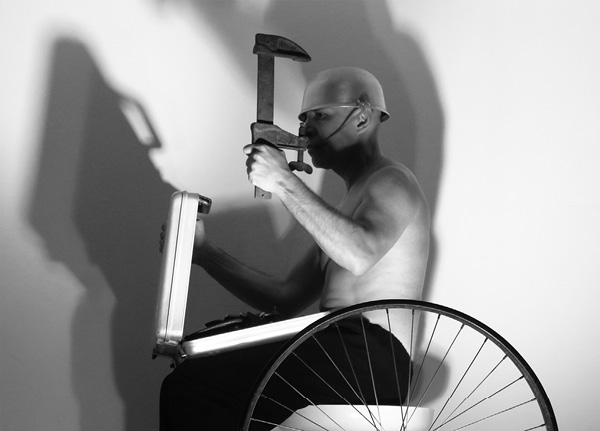
MAKHANAS
first performed on April 20, 2016
Defibrillator Gallery, Chicago, IL
performed once in 2016
HECTOR CANONGE
New York, NY
152843096h152843096e152843096c152843096t152843096o152843096r152843096@152843096h152843096e152843096c152843096t152843096o152843096r152843096c152843096a152843096n152843096o152843096n152843096g152843096e152843096.152843096n152843096e152843096t152843096 152843096/152843096 152843096h152843096e152843096c152843096t152843096o152843096r152843096c152843096a152843096n152843096o152843096n152843096g152843096e152843096@152843096g152843096m152843096a152843096i152843096l152843096.152843096c152843096o152843096m
hectorcanonge.net
facebook.com/hectorcanonge
MAKHANAS
HECTOR CANONGE
Durational performance produced as part of the artist’s residence project, Chicanerias, at Defibrillator Gallery in Chicago. “Makhanas” premiered in the program Light | Sound | Body | Machine, curated by Sara Zalek. The performance takes its name from the Greek word makhanas, machines, and from its resonance in the Spanish language as macanas (phonetically the same as makhanas), which signifies or alludes to weapons, phalluses, whips, and to things that might be considered nuisances, rubbish, nonsense—such as a bad job or a boring conversation. The play of words and the durational actions executed over a period of time at the gallery evoked multiple symbolic transcultural meanings.
In my work I like to explore the territoriality and physical boundaries of the space where I execute my performances. The size of Defibrillator’s gallery space was impressive and a bit intimidating. That I was to deliver a solo performance and to inhabit all corners of the gallery seemed almost impossible. I had been to the studio of my friend, the artist and sculptor Planem Yordanov, and found with great interest the quantity of objects macanas and makhanas that he had accumulated over the years. Since I have always been attracted to discarded industrial objects and utilitarian materials, Planem’s studio was a welcoming arcade of possibilities. For my performance, I gleaned objects that called my attention and provided some link to past memories. For example, when I was a kid, I enjoyed being in my grandmother’s attic or in my father’s garage for the sole purpose of coming into contact with old and strange artifacts.
“Makhanas” evoked those forgotten moments when past memories and present actions collide to produce a surreal experience. The durational performance consistsed of five parts in which objects were appropriated, repurposed in their functional meaning, and embodied by my corporeal movements and actions. Thus the metal wheel of a bicycle was the rudder of an invisible ship, a rusted pipe wrench became my armor flag, an old businessman’s briefcase was filled with metal tools, and a WWII-era Russian helmet was an interplanetary mask… The rubbish is no longer so but, rather, precious ingredients to the performative process.